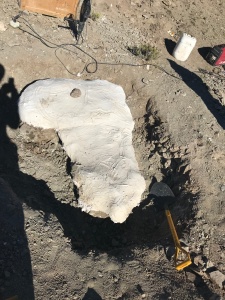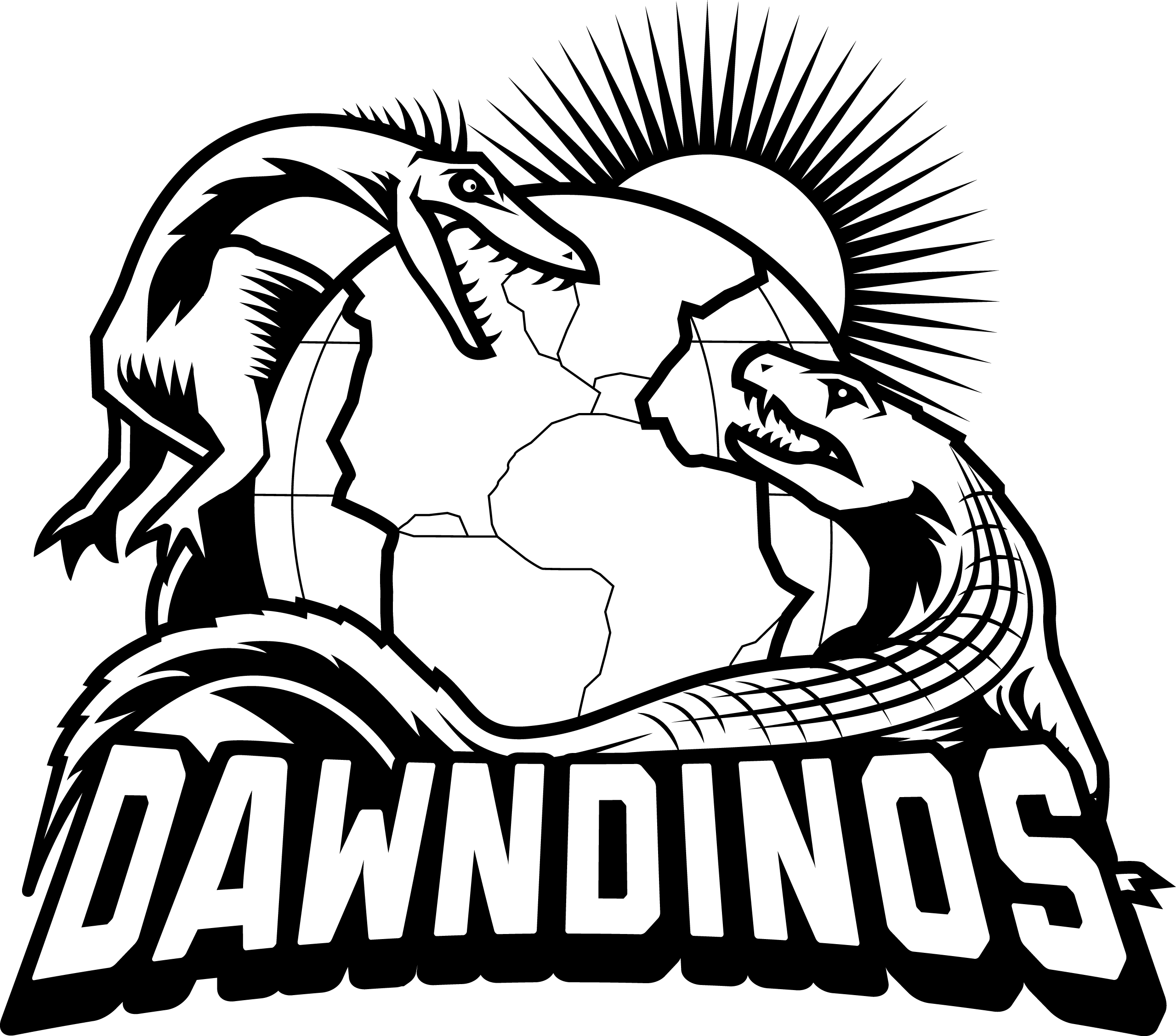Andrew Cuff has spent an interesting and exciting three weeks doing field work in El Tranquilo which is located in the Patagonian region of Argentina. Here are some of the highlights and photos from his trip!
Andrew’s visit to Argentina was linked to a project on Mussaurus which forms part of our DAWNDINOS research. Mussaurus is a basal sauropodomorph (the same lineage that gives rise to the giant sauropods such as Diplodocus), and one of the earliest known. Mussaurus is also special as it is known from a wide range growth series, with fossils found ranging from eggs to adults. Andrew has been working on this growth series and presented the latest findings at the Society of Integrative and Comparative Biology Annual Conference in January 2018 (abstract).

Andrew was joined on this Patagonian dig by palaeo-biologists Alejandro Otero (La Plata Museum/CONICET, Argentina) and Diego Pol (Museo Paleontológico Egidio Feruglio/CONICET, Argentina) with whom we are collaborating on the DAWNDINOS project and working to present our research findings in a manuscript for publication.
Flights from London to Trelew, which is one of the largest cities in Patagonia, took over 30 hours (including stopovers in Rome and Buenos Aires) but the long journey was rewarded by an amazing little airport in Trelew filled with dinosaurs and fossils from the nearby museum, ‘The Museo Paleontológico Egidio Feruglio (MEF).’

- London to Trelew Journey map


 The MEF is one of the primary tourist attractions in the city as it is home to the dinosaur, Patagotitan the largest dinosaur in the world. (Featured in the BBC documentary ‘Attenborough and the Giant Dinosaur’).
The MEF is one of the primary tourist attractions in the city as it is home to the dinosaur, Patagotitan the largest dinosaur in the world. (Featured in the BBC documentary ‘Attenborough and the Giant Dinosaur’).
Patagotitan belongs to the sauropod family, which also includes Diplodocus, Brachiosaurus etc. which are all famous for their large sizes, and elongated necks and tails.
The MEF also happened to be home base for most of the equipment, the technician on the dig (Mariano), and Diego Pol (collaborator on the project).
The drive from Trelew went southbound, first through fairly flat plains which were regularly lined with rhea, guanacos (llama relatives), and tinamous then onto Comodoro, where the plains disappeared into hills and gulleys down onto the coast and continuing on to Caleta Olivia and across from Chubut Province into Santa Cruz Province.

The 3 highway from Comodoro to Caleta Olivia was a beautiful coastal road with a range of birds, sea lions on the beach and whale spouts in the distance.
Tres Cerros was the last spot for internet, paved roads, and true running water then it was offroad onto dirt tracks for a 12 hour drive until the team reached the estancia which was their base camp for the next 12 days.

The excavation site where the team worked is in an area known as El Tranquilo (The Tranquil). The locations are all Triassic/Jurassic in age and have plant fossils (the reason the sites were found back in the 1950s/60s) with basal sauropodomoprhs being the dominant vertebrate fossils found here.
Sauropodomorphs is the larger family which includes sauropods (long necks and tails return), but includes some earlier forms that tend to have shorter necks and are much smaller (previously known as the prosauropods). The team was joined by three other palaeontologists, Adriana Mancuso, Claudia Marsicano, and Roger Smith who had worked on the site in 2012/2013 when it had last been visited.



Plant Fossils

In El Tranquilo the main sauropodomorph is Mussaurus and the site is home to a full growth series of Mussaurus from eggs to adults, but the first individuals found were the young ones ranging from hatchlings to juveniles. It is these young ones that were the inspiration for the name Mussaurus which translates as ‘mouse lizard.’
Over the next few days Andrew and the team focussed on one of the sites where a skeleton had previously been excavated (the hole is still very visible) and prospected, with finds of bits of skull, a new partial skeleton, some bits of eggs and plenty of plant fossils. Then they moved onto another location that was also well known where there was an abundance of fossil bones, several nests of eggs, and a beautiful 3D skull.



In between walking through the fossil rich areas, they came across stone tools (including scrapers, debitage -the unwanted flakes produced during stone working, and even an arrowhead!) before returning to an old skeleton that had been winter jacketed a few years ago.
A plaster/burlap jacket had been made over the top of the exposed skeleton to protect it from the elements and it was left in the field to be collected. The team dug around the skeleton exposing the limits where a few ribs extended the previously jacketed limit, then trenched around the whole area, before re-jacketing again.



Typically, on the final day of the dig just as everyone was starting to pack up the team found one of the best fossils of the trip. It was a nest of Mussaurus eggs, with tiny embryonic bones in at least one of the eggs.
Whilst not the first at the site, it didn’t make it any less amazing to see!

Having had a great trip, Andrew intends to resume his ‘Patagonian Dig’ at a future date. There is still a lot more to be found on this site and bones they found in some new rocks on the last day that need more searching!

